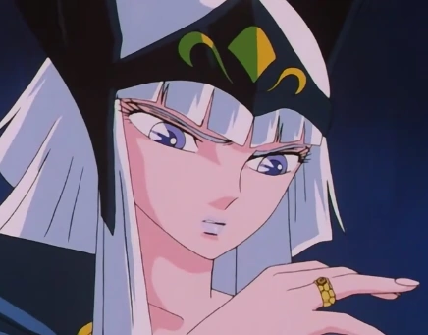The Asgard Saga in the anime and manga series “Saint Seiya” draws heavily from Norse mythology, incorporating various references and elements into its storyline.
Here are some of the notable Norse mythology references in the Asgard Saga of Saint Seiya:
1. Asgard
The Asgard Saga in “Saint Seiya” incorporates Norse mythology by setting its events in the realm of Asgard, one of the Nine Realms in Norse cosmology. Asgard serves as the home of the Aesir gods in both the mythological and fictional contexts.
In the saga, it becomes the backdrop for battles between the Saint Seiya warriors and the elite God Warriors, who draw inspiration from the Aesir deities.
his rich mythological setting introduces viewers to the majestic landscapes and divine conflicts of Norse lore, while weaving them into the anime’s narrative.
The inclusion of Asgard as a central location imbues the saga with a distinct mythological atmosphere, heightening the epic and mystical elements of the storyline. Read about Saint Seiya relation to alchemy.
2. Einherjar
Einherjar are the chosen slain warriors in Norse mythology who died courageously on the battlefield and were taken up by the Valkyries, handmaidens of the principal god, Odin, after death [source]. Odin considered all those who fell valiantly in battle to be his adopted sons.
The word “einherjar” comes from Old Norse and means “lone fighters”. In Valhalla, the einherjar warriors eat meat from the wild boar Sæhrímnir, which replenishes itself every night, and the Valkyries serve them mead from the udder of the goat Heiðrún. They prepare daily for the events of Ragnarök, when they will battle at the field of Vígríðr [source].
The mythological source behind the creation of the God Warriors is rooted in the Norse myth of the Einherjar. Also known as the “Divine Warriors of Odin,” the Einherjar are the fallen warriors gathered by the Valkyries to go to the palace of Valhalla, where they will live in feasts and plenty until the final day of the Ragnarök’s advent.
The Valkyries chose only the best and most heroic warriors, such as Bodvar Bjarki, Beowulf, Sigurd, King Volsung and Hrolf Kraki.
In Saint Seiya: Soul of Gold, the twelve Gold Saints from the first series were revived under mysterious circumstances after sacrificing their lives in Judecca to destroy the Wailing Wall and lead the bronze saints to Elysium.
They were temporarily brought back to life by Odin as Einherjar in Asgard, where they had to face a new threat. The series focuses exclusively on the Gold Saints, who are the strongest warriors between the ranks of Athena’s army.
Before these events, the Gold Saints didn’t have a significant appearance in the series until the Hades Arc, where they ended up sacrificing themselves to destroy the Wall of Grief that blocked the way to Hades.
3. God Warriors
The God Warriors in the Asgard Saga of “Saint Seiya” are formidable elite warriors who serve as a direct reference to the Aesir, the principal group of deities in Norse mythology.
These warriors bear distinct armor and possess unique powers, drawing parallels to the godly abilities of their mythological counterparts. Their role as antagonists mirrors the dynamic between the gods and mortals in Norse myths.
The concept of God Warriors adds an element of divine conflict and cosmic balance to the storyline, reflecting the larger-than-life clashes often found in mythology.
By infusing these characters with traits reminiscent of the Aesir, “Saint Seiya” creates a fusion of ancient myth and modern anime, offering audiences a unique blend of heroic quests and mythological resonance. Read more about Hinduism in Saint Seiya.
4. Hilda of Polaris
Hilda of Polaris, a central figure in the Asgard Saga of “Saint Seiya,” draws inspiration from both Norse mythology and heroic sagas. Her name and role allude to Hildr, a Valkyrie associated with fate and destiny in Norse myth.
Hilda’s position as the high priestess of Asgard mirrors the Valkyries’ role of selecting warriors for Valhalla. Her character is complex, influenced by external forces, mirroring Norse myths where gods and mortals are often intertwined.
Hilda’s actions, including being possessed by evil, resemble mythological narratives where even divine figures are susceptible to corruption. Thus, Hilda bridges the gap between the mythological and fictional worlds, embodying both the power and vulnerability found in the characters of ancient tales.
The incorporation of Hilda enriches the saga by infusing it with themes of choice, morality, and the multifaceted nature of legendary figures. Read about the greek mythology inspiration from Saint Seiya.
5. Odin’s Robe
In the Saint Seiya Asgard Saga, the concept of Odin’s Robe directly references Odin, the chief god in Norse mythology. In Norse lore, Odin is a powerful deity associated with wisdom, knowledge, and leadership.
The term “robe” is used metaphorically here, representing a divine armor or outfit. In the saga, the various armors worn by characters are referred to as “robes.”
Odin’s Robe symbolizes his status as a divine ruler and warrior, paralleling Odin’s role as the king of the Aesir gods and his warrior aspect.
By attributing these qualities to the armor worn by characters, the saga not only pays homage to Norse mythology but also amplifies the mythic undertones of the story.
This interplay of mythological elements and fictional narrative enriches the depth and resonance of the Asgard Saga in “Saint Seiya.” Get to know about the astrology inspiration from Saint Seiya.
6. Bifrost
In the Saint Seiya Asgard Saga, Bifrost serves as a connection between Earth and the realm of Asgard, inspired by Norse mythology’s Bifröst, the rainbow bridge linking Midgard (the world of humans) with Asgard (the realm of gods).
The adaptation of Bifrost in the saga mirrors its mythological counterpart, providing a pathway for characters to travel between these two worlds.
This bridge signifies a connection between mortal and divine, much like in Norse myth, and embodies the epic scope of the storyline.
By utilizing Bifrost, the saga not only incorporates a recognizable element from Norse mythology but also reinforces the sense of a larger, interconnected universe where heroic struggles transcend the boundaries of both time and space. Read about the christian references in Saint Seiya.
7. Siegfried of Dubhe
Siegfried of Dubhe, a character in the Saint Seiya Asgard Saga, draws from the rich tapestry of Germanic and Norse myth. His name is a direct reference to the legendary hero Siegfried from the Nibelungenlied, an epic poem influenced by Norse sagas.
This homage intertwines both mythological traditions, infusing Siegfried with attributes of a courageous and valiant warrior. His possession of the Draupnir, a mythic ring that can manipulate perception, mirrors his mythological counterpart’s possession of a magical ring.
The fusion of these elements creates a character with dual mythic lineage, embodying qualities from both Germanic and Norse legends.
Siegfried’s role as a God Warrior in the saga thus encapsulates the spirit of legendary heroes, bridging the gap between different cultures’ heroic narratives and enriching the saga’s depth with interconnected mythological themes.
8. Freya
In the Saint Seiya Asgard Saga, the incorporation of the name “Freya” draws from Norse mythology where Freya is a prominent valkyrie.
While Freya’s role in the saga differs from her mythological counterpart, her presence influences the actions of Hilda, the high priestess of Asgard
This adaptation highlights the power and influence of divine figures in shaping the narrative, reflecting themes found in myths.
he use of Freya’s name weaves a thread of familiarity for those familiar with Norse mythology while adding layers of complexity to the characters’ motivations and interactions.
9. Fenrir
In the Saint Seiya Asgard Saga, the reference to Fenrir introduces an element of chaos and danger reminiscent of the mythical Fenrir, a powerful wolf in Norse lore.
Although the depiction in the saga may not align precisely with the original myth, the name and symbolism invoke a sense of impending doom and formidable challenge.
In Norse mythology, Fenrir’s untamed nature and role as a harbinger of Ragnarok parallel the creature’s portrayal in the saga as a significant threat.
This connection contributes to the saga’s tension and showcases the saga’s blending of mythological motifs with its own narrative.
By utilizing Fenrir as a source of conflict, the saga underscores the themes of struggle against overwhelming odds and the constant struggle between order and chaos, evoking the timeless themes of Norse myth in its own distinct way.
10. Midgard Serpent
The Saint Seiya Asgard Saga introduces a creature reminiscent of the Midgard Serpent, Jormungandr, from Norse mythology.
Jormungandr is a colossal sea serpent that encircles the world. In the saga, a creature bearing similarities to Jormungandr appears, perhaps as an homage to this mythical beast.
While its portrayal and role may deviate from the original myth, the creature’s presence adds an element of mystery and grandeur to the narrative.
Just as Jormungandr’s emergence signifies an integral part of Norse apocalyptic lore, the creature’s inclusion in the saga potentially foreshadows significant events and challenges.
This connection to the mythic serpent enhances the saga’s epic scale, drawing on the intrigue of legendary beasts while incorporating them into the unique heroic universe of Saint Seiya’s Asgard Saga.

